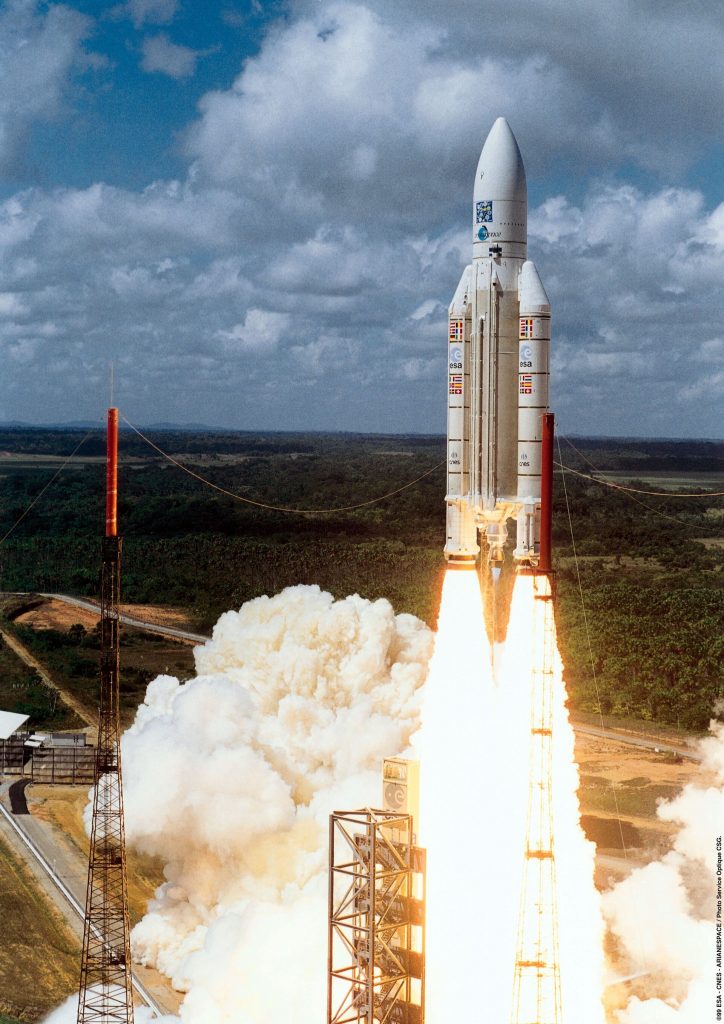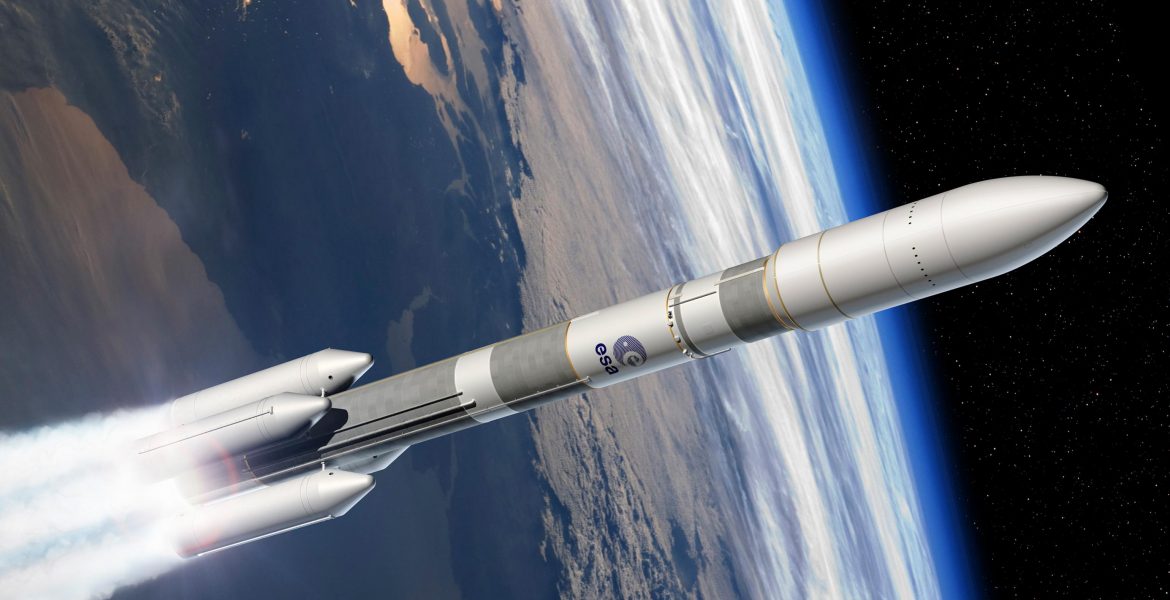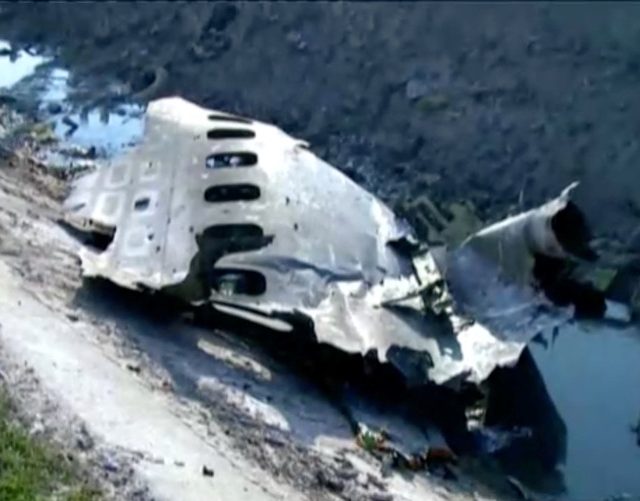The next Ariane 5 launch is scheduled to take place at GMT plus 1 (23.00-00.30) on Friday 30 July from the Guiana Space Center in Kourou, French Guiana. This will be the first Ariane launch in 2021. The rocket will carry a payload of two geostationary telecommunications satellites, Star One D2 and EUTELSAT QUANTUM which it will launch into orbit. The nominal duration of the mission, from lift-off to separation of the satellites, is 36 minutes and 24 seconds. You can watch the launch live on the Arianespace YouTube channel.
On the eve of this important mission, I had the privilege to take a look behind the scenes at the Ariane 6 Integration Hall of the Ariane Group Integration Centre in Bremen, which is a key part of the Ariane Group infrastructure working on the future series of Ariane 6 launchers that will replace the current Ariane 5 series. My guides for the day were Jens Lassman and Michael Kubon.
The Ariane Group Integration Centre has the challenging responsibility of testing and assembling the different components used in the design and construction of all the Ariane 6 rocket stages. There are currently some 600 industrial suppliers for production, coming from 13 different countries, including Italy, Spain, The Netherlands, France and Germany, but it can be expected that this number of suppliers will be reduced significantly.
Testing for safety and for quality control makes up a large part of the activities of the Bremen Integration facility, and this is a heavy responsibility when some of the operating conditions in space cannot be replicated on earth. The Centre also has to conduct tests on potentially hazardous equipment, such as fully charged helium tanks under 400 bars of pressure and liquid hydrogen tanks with a temperature when full of minus 253 degrees centigrade.
Despite the clear dangers, of which they are aware, the engineers performing these duties at the Integration Centre are intensely proud of their work, and their passion is both infectious and inspiring. Their successful collaboration is a concrete example of Europe coming together in an engineering and scientific melting pot, with different brains and cultures, working as a whole to inspire each other by sharing a common dream to bring people to space.
There is a spirit in the air at the Bremen plant that makes you feel that integrated Europe is at work here. The engineering and industrial cooperation is like European cooperation replicated in miniature, where all the parts are coordinated for testing. There are many small contributions from different parts of the continent, but together they create a strong and dynamic product. This spirit clearly motivates the engineers working on the project, and makes them proud to be part of the team that shares the dream to bring Europe to space.
Of course working practices have been impacted by changes required as a result of the need to protect the workforce from coronavirus, such as adjusting shifts, using webex for meetings, and more use of remote working. But the staff understand that they are working on projects that will deliver immediate benefits for rebuilding the economy and employment opportunities after COVID.

The Ariane 5 launch on Friday will deliver into orbit satellites for two long-standing customers of Arianespace, (a subsidiary of the Ariane Group): Embratel, the largest satellite operator in Brazil and Latin America and Eutelsat, one of the world’s leading satellite operators. Arianespace has already orbited 11 satellites for Embratel and 35 satellites for Eutelsat.
Star One D2 is a high-capacity, multi-mission satellite with Ku-, Ka-, C- and X-band transponders that will enable it to expand broadband coverage to new regions in Central and South America, provide internet access to underserved populations and add an updated X-band payload for government use over the Atlantic region.
EUTELSAT QUANTUM was developed under a public-private partnership between the European Space Agency (ESA), operator Eutelsat and Airbus Defence and Space. Using a software-based design, EUTELSAT QUANTUM will be the world’s first universal satellite to repeatedly adjust to business requirements. It features an electronically steerable receiving antenna and operates in Ku-band with eight independent reconfigurable beams. This configuration allows the operator to reconfigure in-orbit the radio-frequency beams over the coverage zones, providing unprecedented flexibility in data, government and mobility services.
This mission will use the Ariane 5 heavy-lift launcher developed and manufactured by ArianeGroup within the scope of a joint European government-industry program. ArianeGroup is in charge of all design and production, from initial design studies, upgrades and manufacturing, to the supply of data and software for each mission. Its specific responsibilities include the production of equipment, structures and propulsion systems, integration of the different stages, and integration of the complete launcher in French Guiana.
We wish the entire team working on this project every success with Friday’s launch and with ongoing research, design and production. Their contribution to science, communications and delivering data to contribute to the fight against climate change is absolutely vital to our society and civilisation.




